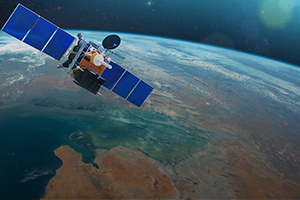Internet in the Sky

SpaceX was recently given permission by the United States Federal Communications Commission (FCC) to deploy Starlink, a network of over 4,000 low-Earth orbit (LEO) communication satellites. The system will not only bring global coverage to otherwise inaccessible places, it will also enable data to be sent twice as fast as optical fiber networks that are currently used to connect to the internet.
The key to increasing speed comes from the fact that, once information has been sent to space, it can be beamed from satellite to satellite using lasers — and sending light through space is much faster than sending light through glass. While this may not be important for a typical user, some applications will benefit from the faster speeds.
For example, large banks that rely on high-frequency trading would likely be willing to pay for faster speeds in a world where fortunes can be made and lost in a matter of milliseconds. For this reason, the satellite coverage will be increased over large international trading centers including London, Paris, and New York. Subscription services will be critical to building and maintaining Starlink, as each satellite will likely last only a few years. This means that new satellites will need to be launched every few weeks (at an estimated cost of tens of millions of dollars each) just to maintain the network.
The first Starlink satellites are scheduled to be launched in 2020.
For information: Teslarati; website: https://www.teslarati.com/spacex-starlink-gains-fcc-approval/